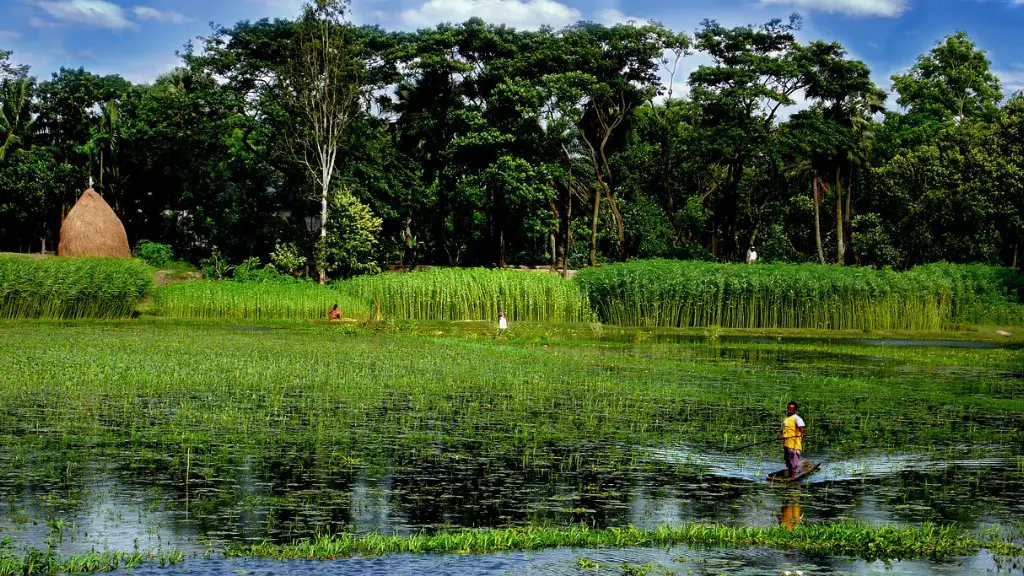Salmon is one of the most popular fish to catch in the Great Lakes region. If you’re looking to get into jigging for salmon in Lake Michigan, there are a few key pieces of information to keep in mind. While this type of fishing is challenging, it’s also incredibly rewarding – if you know how to do it right. Here’s what you need to know about jigging for salmon in Lake Michigan.
First and foremost, you’ll need the right tackle. You’ll need a jig rod and reel, as well as a variety of jigs in different weights, sizes, and colors. The jigs should be relatively lightweight, but heavy enough to be able to penetrate the lake bottom and reach the depths where the salmon reside. And color is an important factor – certain colors seem to perform better than others in Lake Michigan, so it’s worth taking the time to experiment.
You’ll also need to pay attention to the lake’s depth, substrate, and temperature. Salmon tend to prefer cold, deep, and rocky lake bottoms, so if you’re fishing a shallow lake or one without a lot of rocky areas, you may have a hard time finding salmon. To ensure you’re fishing in the right place, it’s always worth taking the time to do some research or even consult with a local guide.
When you’re out on the water, you’ll want to make sure you’re using the right technique. Start by slowly jigging your bait through the water. Most experts recommend short, quick pulses that create a tantalizing vibration for the salmon. Make sure to vary your retrieve speed and jigging motion – a constant and repetitive motion won’t be as effective. As you’re jigging, you may want to periodically pause and let the bait settle on the bottom, as this can be the key to catching a salmon.
One of the great things about jigging for salmon is that it’s relatively inexpensive and easy to get started. All you need is the right equipment, a good understanding of the lake’s dynamics, and the proper technique. Once you get the hang of it, you can start to target larger and bigger salmon – and that’s where the real fun begins.
Where and When to Jig
The ideal time and location to jig for salmon in Lake Michigan will depend on the season and species of salmon you’re targeting. Generally speaking, the best place to start is the near-shore area, particularly in areas with boulders, reefs, and other types of structure. These areas are great spots for salmon to hide and feed, so you’ll have a better chance of success here.
Overall, the best time of year to jig for salmon in Lake Michigan is during the spring and early summer months, when the water is still cold and the salmon are actively spawning and feeding. In the warmer months, you may have more success trolling instead of jigging, as the salmon will be more dispersed. As the fall and winter arrive, the salmon will move back towards the near-shore areas and you’ll be able to resume jigging.
Choosing the Right Jig
There are a few key factors to consider when choosing a jig for salmon fishing in Lake Michigan. One of the most important is the size of the jig. Larger jigs tend to be more effective, as they mimic larger baitfish. However, smaller jigs can still be effective, particularly if the salmon are feeding on smaller baitfish. The weight of the jig is also important, as it determines how deep you can fish and how easily the jig can penetrate the lake bottom.
The color and type of jig are important too. Anglers have long argued that certain colors of jigs can be more effective than others, so it’s worth taking the time to experiment. And as far as jig types go, most experts agree that a soft plastic-style jig is the best choice, as it can be more easily molded to the contours of the lake bottom and mimic the movements of the baitfish.
Target Species of Salmon
The most common species of salmon that you’ll encounter in Lake Michigan are Chinook salmon and Coho salmon. Chinook salmon are the larger of the two, typically weighing in at around 10-12 pounds, while cohos usually weigh in at around 4-6 pounds. In terms of jigging, both species can be effectively targeted with the same techniques, but you may need to adjust the size and weight of the jig depending on the species you’re targeting.
In addition to the Chinook and Coho salmon, there are a few other species of salmon you may encounter in Lake Michigan, including pink salmon, lake trout, and lake whitefish. Trout and whitefish can both be targeted with jigging, but they tend to prefer deeper, colder water, so you may need to venture out a bit further if you’re looking to target them.
Tips and Tricks
When you’re out jigging for salmon in Lake Michigan, be sure to use the appropriate gear. A quality reel and rod are essential, as these will be the foundation for all your future fishing trips. Be sure to use the right jig for the species you’re targeting and make sure to properly adjust the weight and jig size. You’ll also want to make sure you’re using quality braided line, as this will help your jig remain in contact with the lake bottom and ensure you have a good feel for what’s going on.
In terms of technique, most experts agree that jigging vertically is the best way to target salmon in Lake Michigan. You’ll want to use short, quick pulses to create a tantalizing vibration, and vary your retrieve speed and jigging motion if necessary. Finally, when you get a bite, be sure to keep the line tight and keep steady pressure on the salmon until you can get it to the surface.
Consider the Weather
Finally, be sure to keep an eye on the weather when you’re out jigging for salmon in Lake Michigan. Certain weather conditions, such as strong winds and heavy rains, can make jigging more difficult. Additionally, the lake is more shallow and warmer during the summer months, which can make visibility and lure selection more important. Be sure to consult a local weather forecast before you go out, so you’ll have an idea of what to expect.
Equipment and Safety
When jigging for salmon in Lake Michigan, you’ll need to be aware of additional safety considerations. Be sure to wear a life jacket at all times, as the lake can be choppy and dangerous. Additionally, be sure to have additional safety equipment on board, such as flares and a first-aid kit. Proper preparation is essential when fishing in the Great Lakes, so be sure to take the time to ensure you have all the necessary gear and supplies.
Conclusion
Jigging for salmon in Lake Michigan can be an incredibly rewarding experience. With the right gear, technique, and knowledge, you’ll be able to catch some of the biggest and best salmon in the area. Be sure to pay attention to the weather, the lake’s depth and substrate, and the species of salmon you’re targeting, as these will all help you have a successful and enjoyable day on the water.




